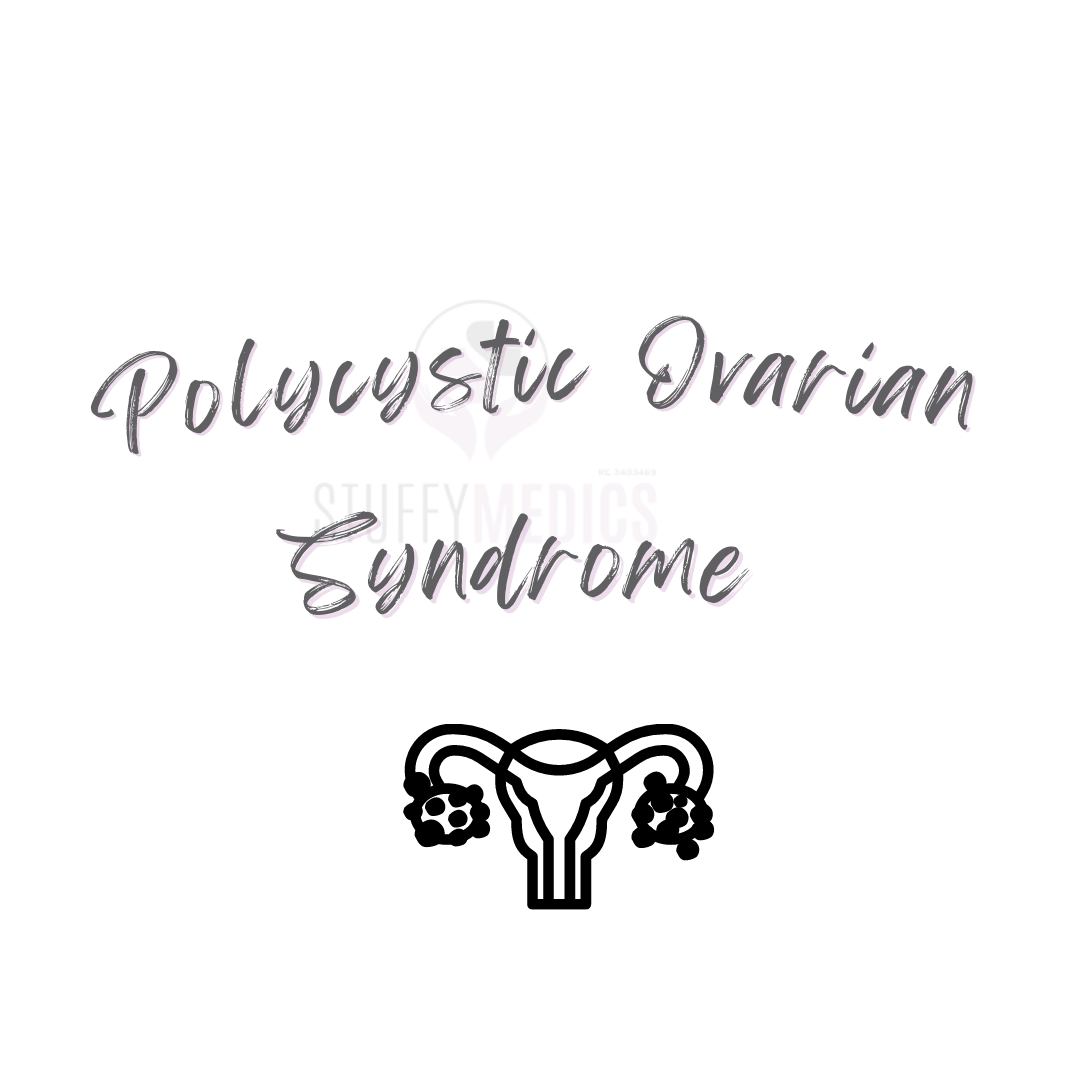PCOS is a syndrome of ovarian dysfunction along with the cardinal features of hyperandrogenism and polycystic ovary morphology. It was described in 1935 by Stein and Leventhal.
PATHOPHYSIOLOGY
The discussion can be organized under the following headings:
(a) Hypothalamic — pituitary compartment abnormality.
(b) Androgen excess
(c) Anovulation.
(d) Obesity and insulin resistance.
(e) Long-term consequences.
CLINICAL FEATURES
The patient complains of increasing obesity, thinning hair and hair loss from the head, menstrual abnormalities (in the form of oligomenorrhea, amenorrhea or dysfunctional uterine bleeding), presence of hirsutism, acne, acanthosis nigricans and infertility.
DIAGNOSIS
Guidelines from the Endocrine Society recommend using the Rotterdam criteria for the diagnosis of PCOS. The Rotterdam criteria mandate the presence of 2 of the following three findings: hyperandrogenism, ovulatory dysfunction, and polycystic ovaries—plus the exclusion of other diagnoses that could result in hyperandrogenism or ovulatory dysfunction.
Rotterdam Criteria:
1. Hyperandrogenism – either clinically by skin manifestations of androgen excess OR hyperandrogenemia (high testosterone in a blood test).
2. Ovulation dysfunction (i.e. Oligo/Anovulation)
3. Polycystic ovaries on ultrasound.
AND
Exclusion of phenotypically similar androgen excess disorders such as congenital adrenal hyperplasia (CAH), androgen-secreting tumors, Cushing syndrome, thyroid dysfunction, and hyperprolactinemia.
INVESTIGATIONS
- Ultrasound scan: Transvaginal sonography is especially useful in obese patient. Ovaries are enlarged in volume (> 10 cm3). Increased numbers (> 12) of peripherally arranged cysts (2–9 mm) are seen.
- Laparoscopy — Bilateral polycystic ovaries are characteristic of PCOS.
- Hormonal assay: serum levels of LH are elevated. The ratio LH: FSH is > 2:1.
- Raised level of estradiol and estrone ,the estrone level is markedly elevated
- Androstenedione is raised.
- Raised serum testosterone (> 150 ng/dl) and DHEA–S may be marginally elevated.
- Low serum progesterone.
- Hyperprolactinemia.
- Reduced level of Sex Hormone binding globulin (SHBG).
- Raised fasting insulin levels > 25 µIU/ml and fasting glucose/insulin ratio < 4.5 suggests IR (50%).
- Lipid profile: hyperlipidemia.
MANAGEMENT
Management of PCOS involves the following:
- COCP: This should regulate menstruation.
- Cyclical oral progesterone: This too can be used to regulate menstruation.
- Metformin: This is beneficial in a subset of patients with PCOS, those with hyperinsulinemia and cardiovascular risk factors. It is less effective than clomiphene for ovulation induction and it does not improve pregnancy outcome. It should be discontinued when pregnancy is detected.
- Clomiphene: This can be used to induce ovulation where subfertility is a factor.
- Lifestyle advice: Dietary modification and exercise is appropriate in these patients as they are at an increased risk of developing diabetes and cardiovascular disease later in life.
- Weight reduction.

